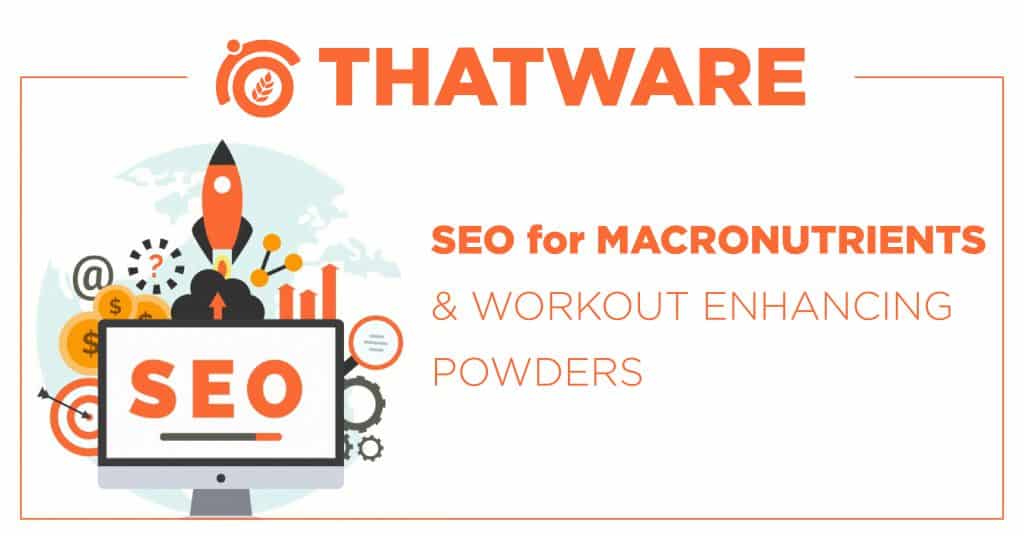FILL OUT THE FORM BELOW & ALLOW US TO TAKE YOUR SEO Services For Macronutrients & Workout Enhancing Powders TO A WHOLE NEW LEVEL!
Did you discard yourself or your private practice? If you are having trouble finding the Internet, it may be time to try Search Engine Optimization (SEO) to help rank your site higher in search results. This makes it easier for new customers to communicate with your private work.

Like many industries, food supplement companies are undergoing a major transformation in how they do business.
The COVID-19 epidemic has forced companies that used to rely on trade shows to re-focus on digital marketing. Increasing website traffic is more important than ever.
We have helped more customers increase their traffic by tens of thousands of organic (unpaid) ideas and increase their customer purchases by about 15 percent last year.
Along the way, we’ve put together a short list of key steps that will help your product get more traffic without advertising.
Testing Your SEO Website
Making significant improvements in search engine rankings depends on having a good idea of your strengths and weaknesses. A thorough SEO test will show you what to focus on.
Many supplement companies have literally hundreds of products sold online, and it is easy to get frustrated if you do not prioritize them. Here are a few things you may want to check out:
1. Professional SEO checklist
- See how “mobile-friendly” your website is. Nearly half of all internet traffic comes from mobile devices now, and Google prioritises websites that deliver faster, more responsive construction.
- Check the speed of your website. Remove code-bloat and compress your image sizes.
- Delete useless pages that Google has indexed, and correct any important pages that it can point to.
2. On-page SEO and Off-Page
- Make sure your keywords point to a searchable keyword (other than the most difficult points), and include them in your title tag, subheadings, meta description, and content on the page. Use internal and external links to add context and help your visitors achieve their goals.
- Check your backlink profile and look for opportunities to find relevant and reliable backlinks to websites with high domain authority. Remove any toxic links that could be harmful to your site.
- Find keywords your rivals are equal to, and follow them!
3. Good Content Checking Right Boxes
- Produce blog posts, videos, and / or podcast articles that answer questions doctors, pharmacists, trainers and consumers want.
- Enter a long-tailed keyword phrase at the beginning of the topic, and use it naturally in a copy.
- Write an average of 1,000 words for each blog, and then add related words to your subheadings.
- Incorporate internal and external links to important sources.
- Embed graphics and videos that support posts on your blog to increase SEO and reduce bounce levels.
Backlinko provides a good SEO checklist that will not leave a stone unturned as you look for things that need to be improved.
SEO Tips to Help Your Business Get Online:
1. Create a Google My Business account
Have you ever wondered how businesses appear on the right side of the Google search page? (Like the image pictured on the right.) Your private practice can be accessed this way as well by creating a Google My Business Account. This free easy addition to Google takes a few minutes to set up and can make a difference in the availability of new customers. Enter your business address, phone number, hours, and website to make your practice more accessible. Encouraging reviews (in this case, evidence) will help knock your private practice high on the list.
2. Have an Easy-to-Use Website
These days, most people search for their phones. If your website is not mobile, you could easily lose it by making that instant connection due to minor interruptions. Website hosting like Wix will often have a mobile display feature, so be sure to check out what your website looks like both on a computer and on a mobile device, and then adjust accordingly. Most website design platforms will allow you to easily navigate between both views, your desktop and mobile views. Make sure you always switch between the two views, making sure you make your site mobile.
3. Play Around by Screaming Frog Spider Tool
Shouting a Frog can help you find what’s on your personalized website that prevents you from appearing in search results. This tool will analyze your website to see if there may be any problems such as broken links, errors, or redirects. It analyzes page headings and will help you find out what holds your website that is not available online. Screaming Frog has a free download available for download that lasts 500 URLs.
4. Use very high keywords
Using keywords in articles or page titles, title tags, title attributes, and meta descriptions will help make your website available online. Taking the time to apply these SEO techniques can have a huge impact on your site search. Keywords can range from “Nutrition Counseling” to “Low Carb Diet.” If you find the specifics, it is likely that the right type of person looking for a private practice like yours will find it online.
Starting keywords can seem like a little tricky. All in all, page titles are an easy way to use SEO keywords, but far from the only option.
5. Find Your Business Address On Google Maps
When setting up your Google My Business account, search for your business address by entering it and allowing Google to verify it. They will send a postcard to the address with instructions to complete the verification process.
6. Encourage Testimonials and Review
Your private practice is a business. When a skeptical new client seeks healthy eating advice, your testimony can do wonders to overcome it.
If you already have the evidence, encourage clients to send it to places you would like to be found, such as Google Review, Angie’s List, or Yelp.
7. Start Blogging
Google often likes websites with many pages. Up the list by blogging. Every article is a new page on your site, and if it is updated regularly, you will have new content that search engines will find.
Blogging can help more than just SEO. Think of it as a platform to share your knowledge and experience, but also your personality and your livelihood. Incorporating content such as infographics, ebooks, and additional resources will elevate your website and give potential clients reasons to keep coming back.
8. Set up Google Analytics
Link your website to Google Analytics. This free app allows you to track and monitor how many people access your website and how they access your website. This is a strategic tool. While Google Analytics does not solve problems or provide you with solutions, it will allow you to monitor how people find you online.
9. Do not give up
Creating an audience with an online brand name for your private practice takes time and energy. Setting a deadline for your SEO is worth the effort, but it has no obvious impact right away. This is a covert activity that will help your site appear online over time. With a better online rating, more clients will be able to find your website, and for you, growing your client will lead in time.


